The Kershaw Leek has always been a mainstay of recommended everyday carry knives. It’s available at an extremely affordable price point (remember, it’s actually USA-made), has excellent fit and finish, as well as above average cutting performance. All this places the Kershaw Leek firmly in the weekly rotation of many knife aficionados.
I own many knives (as you well know by now), but I can safely say that the Kershaw Leek doesn’t really fit in with the rest of my knives. It’s in a category of its own.
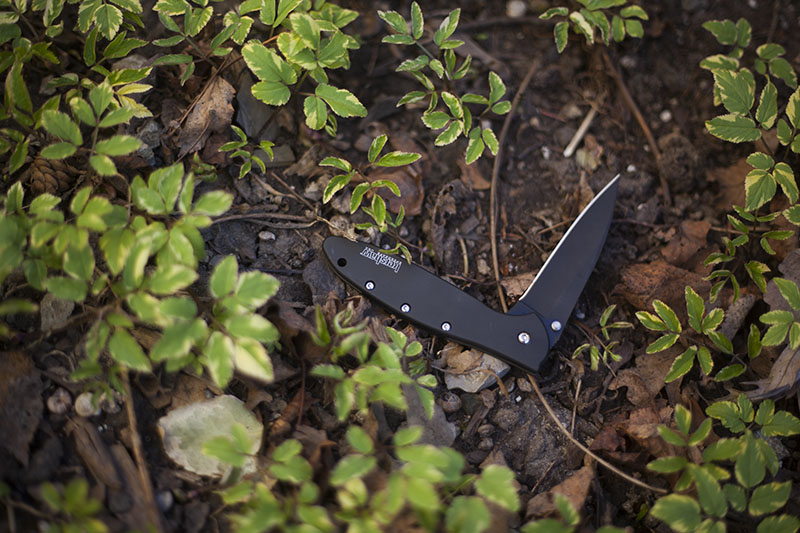 Kershaw Leek Folding EDC Flipper Knife – Amazon / Blade HQ
Kershaw Leek Folding EDC Flipper Knife – Amazon / Blade HQ
Aesthetically, I have always felt underwhelmed by the Leek, especially compared to its handsome larger brother, the Blur.
Sometimes too much minimalism can leave you feeling like something is missing, but like a lot of Ken Onion designs, it really comes alive when it’s being used for its intended purpose.
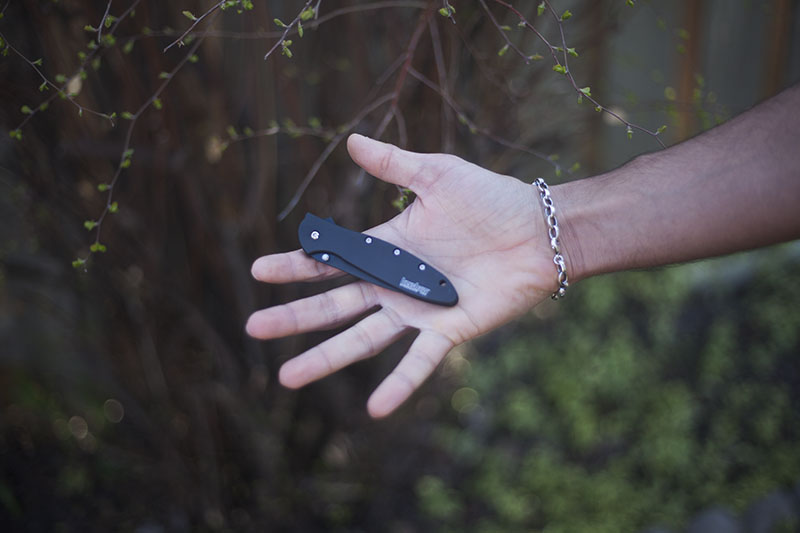
You can really appreciate how (relatively) compact the leek is when it’s closed: 4 inch (10.16 cm) handles are pretty small, although that might be due to the recent trend of over-sized tactical knives in the industry. I am sure if an old timer handled the leek, he would consider its size to be quite average. With that said, when placed alongside the Spyderco Endura, Spyderco Military or Kershaw Tremor, the Leek really is quite pocket-able. It’s only really comparable in size to the Spyderco Delica, but even then, the Leek is a touch smaller.
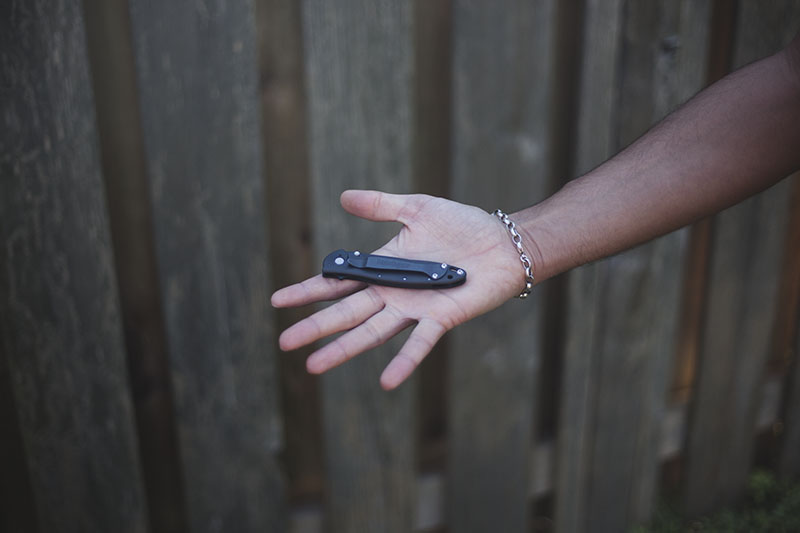
The 3 inch (7.62 cm) blade features a Wharncliffe design. Whilst extremely utilitarian for your standard EDC tasks, I do actually feel that the Wharncliffe blade matches the demure styling of the Leek perfectly. A leaf blade on this knife would not go down well with me, even though I love them on knives like the Sage II.
In a lot of ways, the blade has to match the knife, which then has to match the knife’s intended purpose.
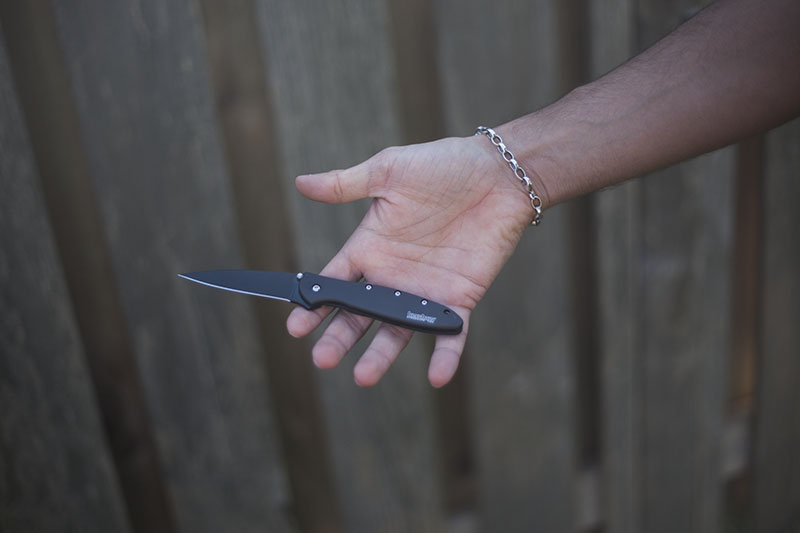
Speaking of purpose, the photograph below encapsulates the Kershaw Leek’s raison d’etre perfectly. It’s the leanest, most acute, and frankly scary tip of any knife I’ve owned. Ever.
The Wharncliffe blade is a mere 0.09 inches (2.3 mm!) in stock thickness, which in itself is not anemic – just thin. But couple that with a very aggressive hollow grind running all the way to the tip? Holy crap this is a needle point.
I have EDC’d this paper-thin slicer for a few weeks now, and even though I initially worried about the tip snapping off – definitely never happened. Like non-locking folders, you have to adjust the way you utilize and think about your tool when cutting. No, it cannot pry (at all), so don’t even try it. As long as you acknowledge the limitations inherent in this knife, you will be just fine. Don’t be scared off by how lean it is.
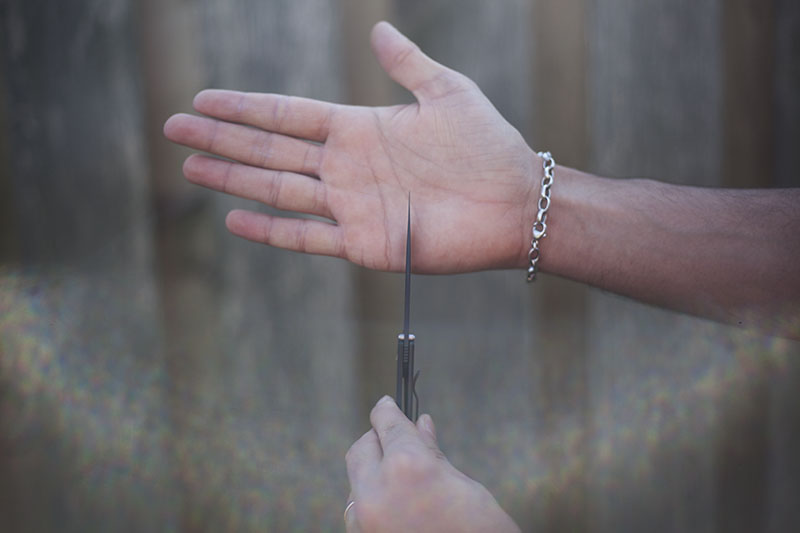
Kershaw chose to utilize Sandvik 14C28N steel, which in my experience is a very clean steel (carbides are not as apparent as D2 steel for example), that holds an edge acceptably. Better than 8cr13MoV, but not as good as CPM S30V.
This is not a criticism, as I don’t feel the need to obsessively carry a super steel. The edge retention is plenty good enough to get you through a work week, or even a month with light office cutting, and as far as I am concerned, that’s quite good enough. Taking into account the price-point of the Leek, it’s reasonable to see some compromises on the materials used, which includes a more average steel and stainless steel handles instead of titanium.
I may not always like this, but I understand it completely.
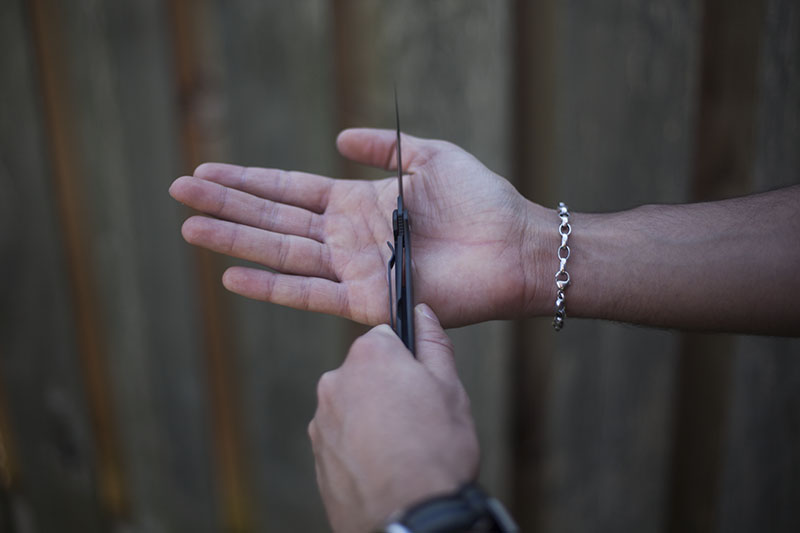
The Leek is a stainless steel frame lock. It engages late (see the photograph above), but with authority, and it simply is not going to disengage – even under hard use. With that said, the blade is a slicer, so faced with extreme tensile pressure it will fail long before the lock does. But for the sake of argument, even if the lock did fail, the Leek’s flipper deployment means there is essentially a built in guard for your digits, so your fingers are quite safe.
It should be noted that the lock up was late out of the box. This initially concerned me, as I worried that there wouldn’t be much left of the tang/lock face for general wear and tear, but after a few weeks of consistent flipping, the lock has 100% stabilized and I see no further travel, so for now my concerns are not ground in any objective reality, but merely an observation.
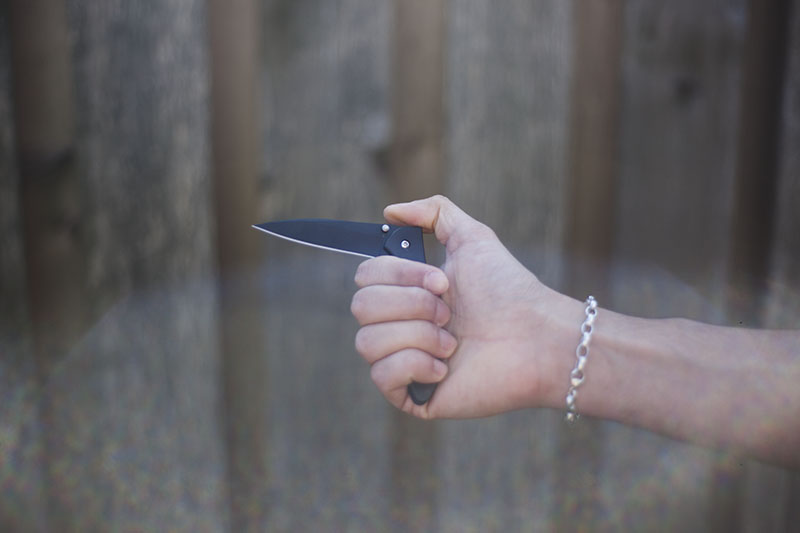
The deployment system of the Kershaw Leek is super fast. Namely, due to the assisted “Outburst” mechanism that Kershaw frequently utilizes. Can’t say I am the biggest fan of assisted knives in general as you all know, but in practice, the Kershaw Leek deploys quickly and reliably with a firm, authoritative snap; so no complaints from me over this one.
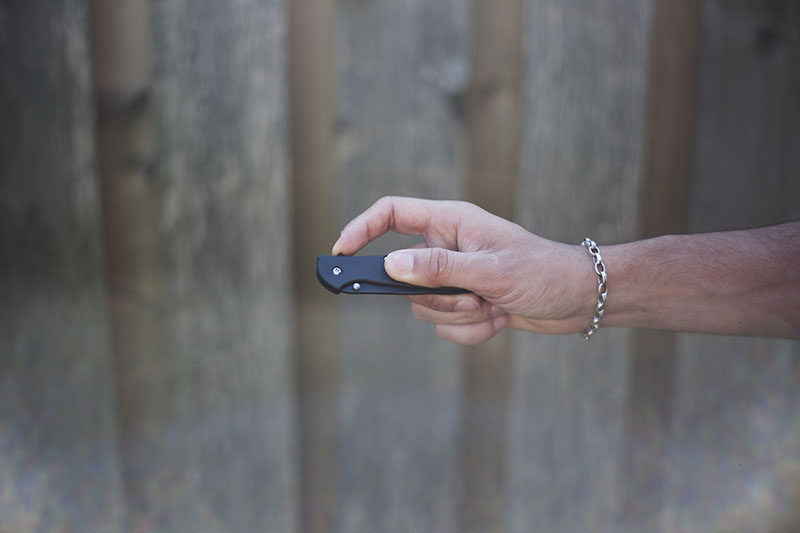
The Kershaw Leek’s flipper does not require much pressure to deploy, so Kershaw threw in a secondary lock to keep the knife closed. It’s basically a sliding bar that goes over the blade when it’s within the frame. The tension can be adjusted and, in my experience, it works flawlessly.
I personally keep the lock disengaged because I like being able to whip out my EDC, cut whatever is in front of me, and quickly place it back into my pocket, all in one smooth motion. That’s my personal choice, however, you certainly do not have to do as I do. Frankly, more options are always better, especially when they are as unobtrusive as this secondary lock. Definitely great for those who want to use it.

The only real downside to the Kershaw Leek is the rather mediocre balance point. A very lean blade and stainless steel handles means that the balance point will always be handle-biased. This is not a design decision, but rather an economic reality. Titanium scales would possibly have solved this issue, but at what price?
Sidenote; I am sure that some smart-ass will point out that Kershaw did produce a “high-end” Leek (in 2006) using titanium for the scales and ZDP-189, for the blade, and this would fix any of the mild criticisms I had about weight, balance, and blade steel, but unfortunately this version of the Leek (model 1660TIZDP), has not been available for many years and availability is absurdly scarce. Thus, it’s not exactly fair to bring it into the mix as a valid comparison.
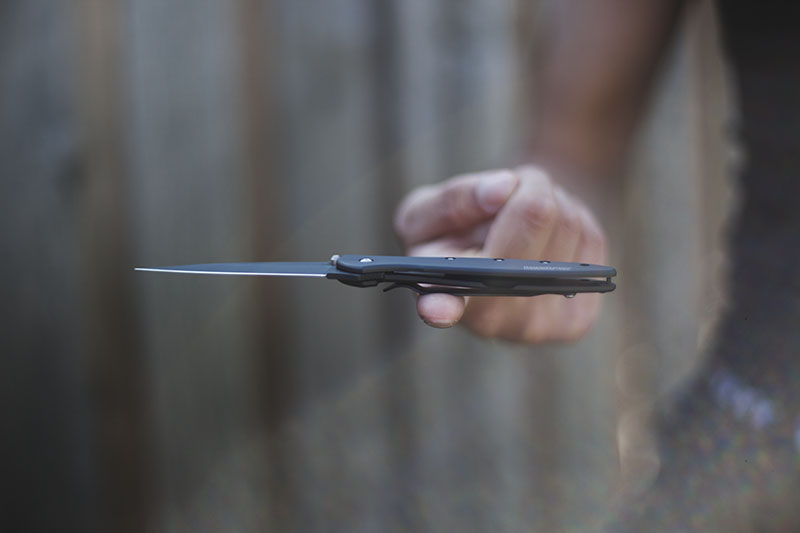
Aesthetically, the pocket clip is almost comically large when taking into account the size of the knife. The pocket clip takes over most of the handle, and while that would be enough for me to dismiss out of hand, I will say that it’s a very well conceived clip in terms of function. Yes, it’s not particularly subtle, and no – it’s definitely not a deep carry clip like the wire clip on the Sage 1, but it is very comfortable when gripping the handles, and it hugs your pockets securely when you’re EDC-ing your knife. That’s enough for me; I don’t love it but I certainly don’t hate it.
In terms of visibility, if you pick up the blacked out version like I did, you will find that it will disappear in your pocket (to an extent) as long as your pants are also dark.
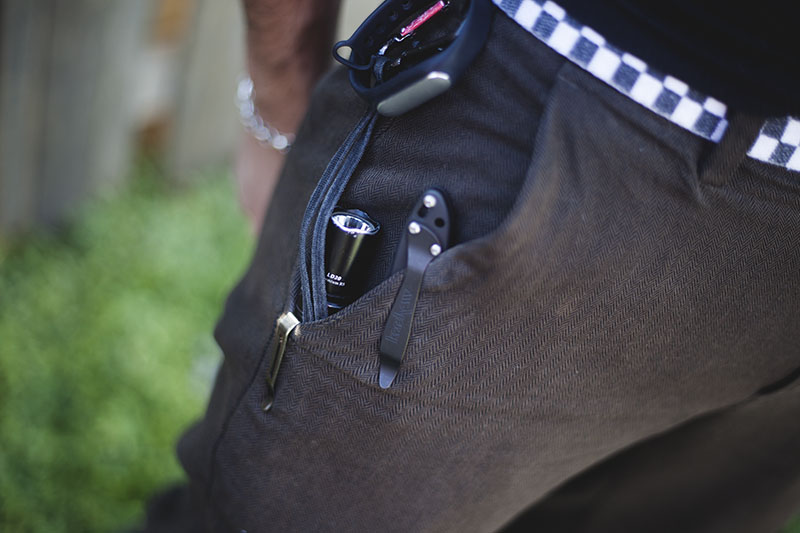
I spoke of the secondary lock earlier, and in the photograph below, you can see it above the tip of the blade. As you slide the secondary lock down, the bar from it literally stands in the way of the blade opening. Sorry if that description seems a bit difficult to follow – if you ever hold this knife in the flesh, you’ll understand right away what I was trying to say.
It’s simple but effective, which is the best kind of secondary feature as far as I’m concerned. I will also add that the centering, as well as general fit and finish, is dead on perfect. I am very impressed with this $40/$50 USA made needle.
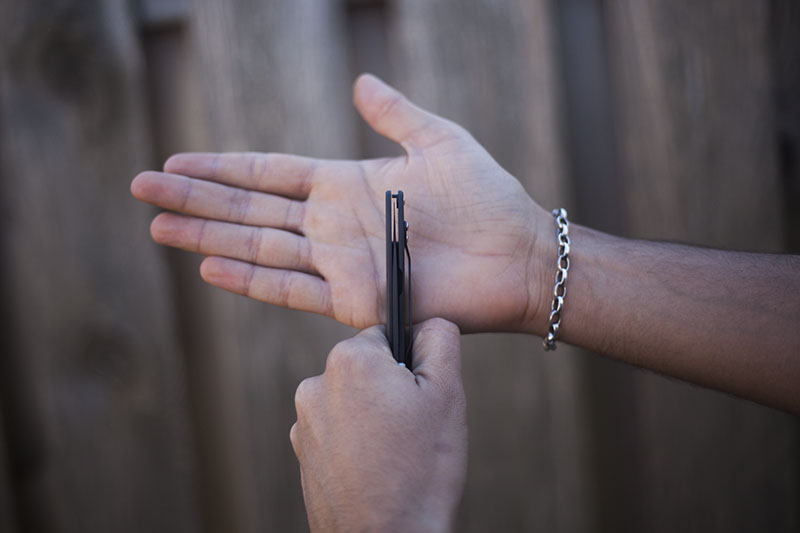
Comfort of the handles is relatively neutral, with a bias towards more organic/natural grip styles. No deep choils or swedges on the Leek, but rather, a clean inward curve much like the recently reviewed ESEE Izula. It will fit pretty much all hands, and whilst the handles are rather thin, it’s obviously not designed as a rough use/heavy duty EDC, so I am not particularly concerned with any subtle hot spots.
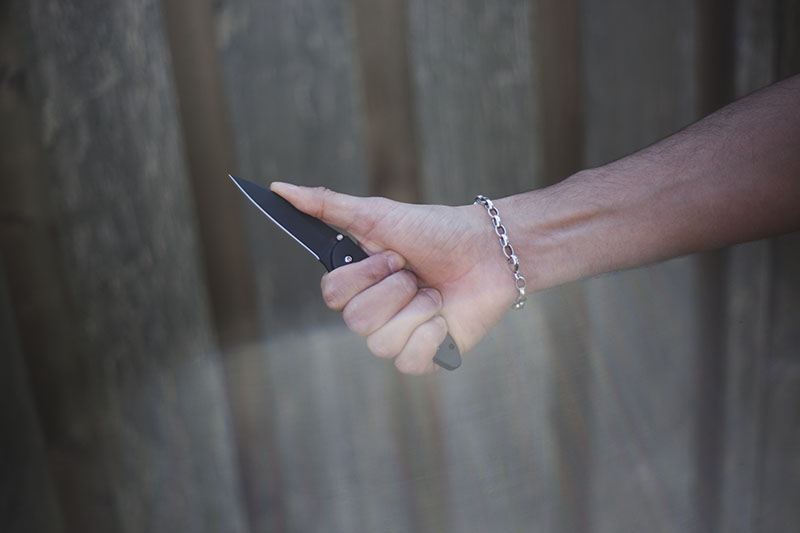
You can in theory choke up on the flipper of the Kershaw Leek for a more controlled grip, but in practice, I wouldn’t recommend it, as you barely have enough unsharpened blade to keep your pointing finger safe.

Like all neutral handles, the Leek handles reverse grips with aplomb. It doesn’t demonstrate any grip bias beyond the standard saber grip, and I daresay you could grip it in a variety of exotic ways with no evident comfort issues.
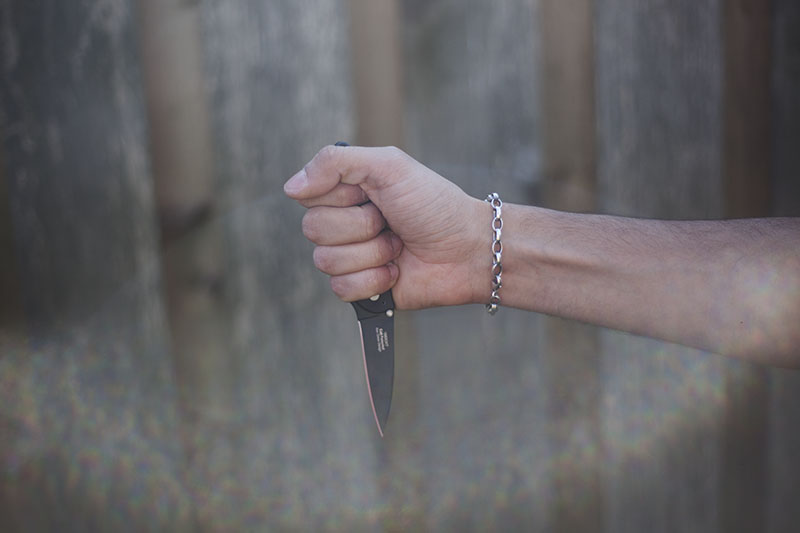
Pinching is once again technically viable, but definitely not recommended. The exposed edge is just too close to my fingers for comfort, and the Leek is one hell of a slicer, so I would not suggest it. For the sake of a complete review, however, I have mentioned it.
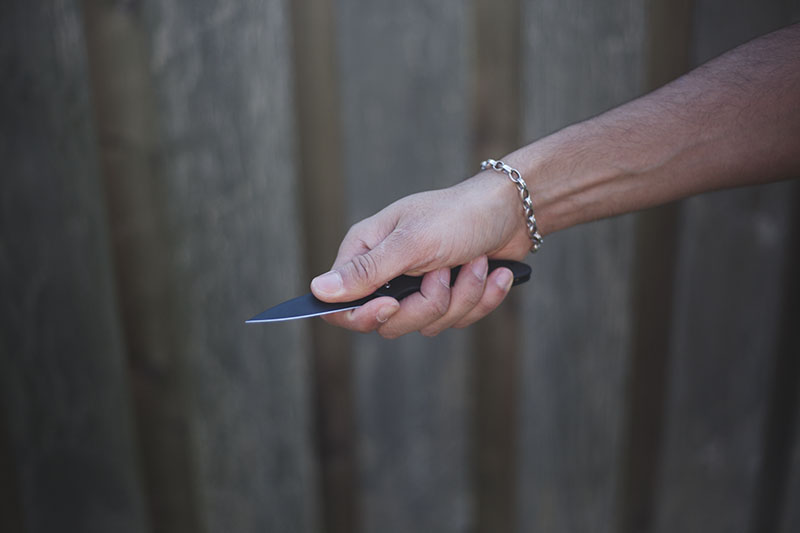
The frame is tapped for both tip up and down carry, but unfortunately for you lefties – right side only!
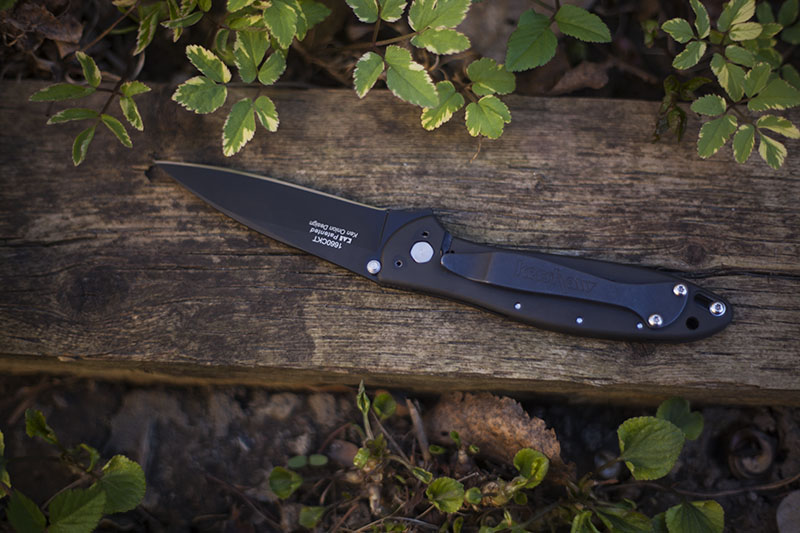
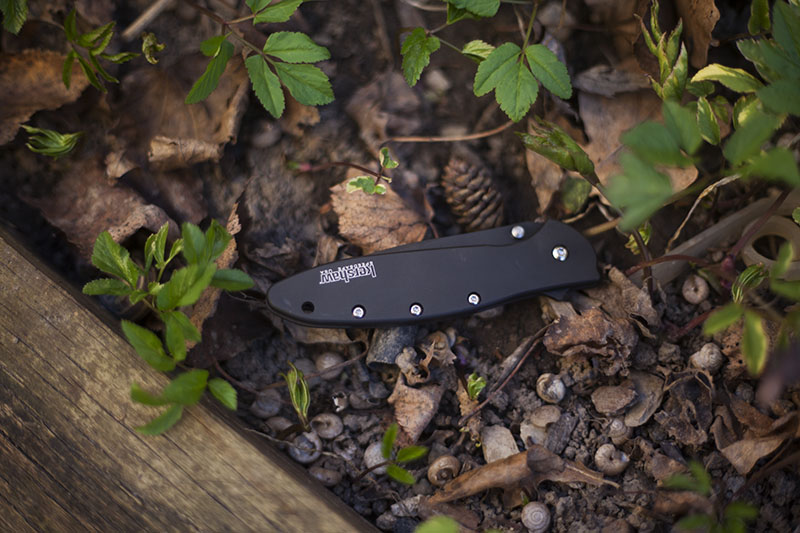
The Kershaw Leek is unique in my collection first and foremost for its absurdly scary needle-like tip. If I had to pick a folding knife from my collection to cut out a splinter or do any type of super delicate cut – this would be it.
It’s an awesome experience to wield such a sleek and thin tool in day to day life as you effortlessly cut open boxes and open letters. In a lot of ways, it makes you question the viability of all those “tactical” folding pry bars we are constantly being bombarded with, and if nothing else, I applaud Kershaw for bringing into the marketplace such a unique specimen. Many manufacturers purposefully (Spyderco for instance, with the reinforced tip on the their Endura 4/Delica 4) have thicker tips so as to not have to deal with warranty issues from idiots who pry with needle points. Kershaw is buckling that trend by not treating its customer base like idiots.
I have no idea if Kershaw has had to deal with excessive warranty claims, and frankly if you broke it doing something stupid with it, I don’t think the manufacturer should be liable. But at the end of the day, as someone who appreciates interesting, unique knives that offer something special to the table, thank you to both Kershaw and Ken Onion for the Leek.
It’s a definite keeper for my collection.
Should have detent not tip safety lock but mines fine for the price and fairly good blade steel except tip looks weak but it won’t break if used properly .knives don’t pry just cut in many ways
I like the needlepoint tip to be honest, its rare these days as manufacturers tend to make ’em stubby to limit warranty returns. On a practical point- I used it recently to take out a splinter and I don’t think I could have done that with a thicker tip; atleast not easily.
Any knife will rust if not taken care of.
Your pocket on a hot day is a perfect example,it’s called moisture.
I live in South Florida and never had a problem.
I go nowhere without my knife. I just wipe it off at days end.
Have you looked into “rust proof” knives from Spyderco and Benchmade? H1 steel & X15tn have no carbon and thus are safe, even in salt water!
I had a leek with made in 2006 USA on the blade I sat it down in post op and a Dr. decided it was his. I purchased another with no lineage on the blade and for the life of me I cannot sharpen past utility blade standards. I’ve been sharpening knives for 30yrs and this thing stumps me.
Any advice?
Eek, thats a weird situation. In your position, I would start from zero. Put a lean grind with a high grit stone and work progressively with a fresh bevel. If you were in my neck of the woods, I would 100% take a look at it for you but I assume you’re not in the UK.
Let me know if you figure it out!
I own 2 of the 1660BLKW versions. Stone washed blades and handles in black out. All hardware is black except finger deployment button on blade. No rust issues and I have been in salt environments a lot fishing.
I have much more expensive knives but for some reason, it always seems to be in my pocket! The others, they stay in the dark in my drawer.
Aye, the thing I find interesting with the Leek, is how useful a needlepoint tip really is. Its so hard to EDC a Leek and then go back to a “normal” knife with a more obtuse tip.
Great review Thomas ,thanks.
I was reading Amazon customers reviews on latest 1660 models and there was a lot of complains about blades starting to rust within weeks of use.
Did Kershaw offered more rust resistant blades in the past? My 2009 Leek blade has no rust issues at all.
Thanks
Edgar
Mhm, interesting Edgar, I personally have never had issues with corrosion on my Leek but then again I don’t live in the tropics or Florida- I think with these cases, location of the user has a bigger impact.
the CRKT Eros seems to be an improved version of this knife (or at least another version) any thoughts?
I haven’t handled it so I can’t pass judgement, its definitely a good looking knife though!
the leek is a great little knife. i got my dad one for christmas a few years back and he carries it all the time. if you dont try and use it for things it wasnt intended for, itll serve very well. great review
Exactly! I love its needlepoint and I definitely wouldn’t want a “tougher” blade. As far as I am concerned its pretty damn perfect.
Ken Onion followed in the design of Leek the motto “form folows function” and has therefore not only created a highly functional, but also very beautiful little pocket knife with a high recognition value.
My Leek is the knife with stainless steel handles and Sandvik plain blade without any change, just as supplied out of the box.
With a highly polished knife blade and knife handle as you own it, I would need constantly a cleaning cloth in my pocket to wipe my own annoying fingerprints …
I own the Kershaw Volt SS which I polished heavily and yeah, I agree that its a giant pain in the ass to keep pristine. With that said I find just giving up and ignoring any fingerprints to be the only viable solution cos no matter what happens I see marks pop up every time I take it out!
http://morethanjustsurviving.com/kershaw-volt-ss-stainless-steel-folding-knife-review/
I polished the scales up using a buffer. Its literally like a mirror now!
Nice review. I wish Kershaw offered the blackout version with black or blued screws and hardware, making it a truly Black Beauty.
Aye, that would be incredibly sleek and quite awesome. I do love stealth hardware!
What tools do you recommend for keeping in car besides first aid kit.
In my experience the most valuable tool was the portable battery pack/jumpstarter. With that said I live in Canada and sub zero temps like to kill my battery if I don’t drive for a few days.
Thank you for the excellent reviews. Well done.
Thank you for dropping by!
I have two of these, one serrated and straight blade! Great knives!
Agreed, I can’t say I am the biggest fan of serrations but I can definitely see the appeal for specific uses (cordage etc.).
Thanks for commenting Scott!